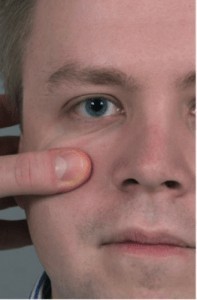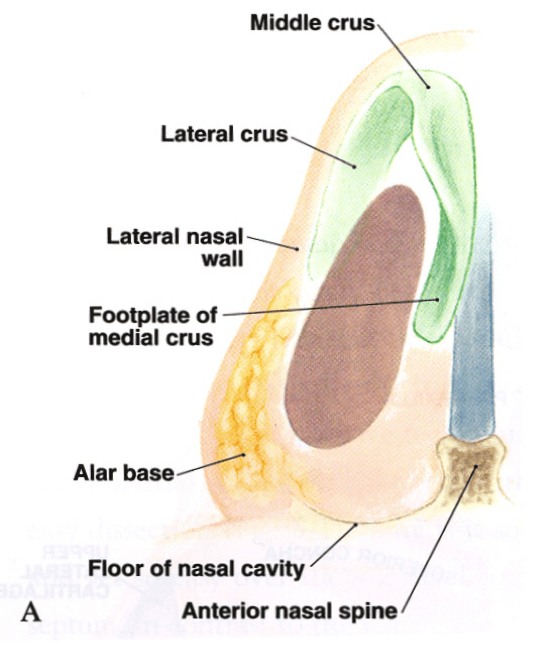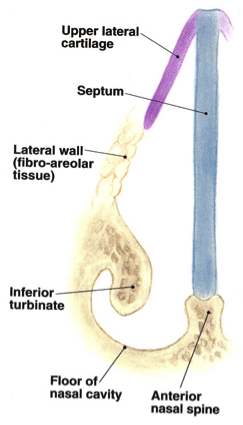Nasal Valve Collapse
What is the nasal valve?
The nasal valve is the narrowest part of the airway from the nostrils to the trachea. It is divided into two parts – the internal and external nasal valves.
The external nasal valve is the nostril opening on each side at the front of the nose. It is supported by skin, cartilage, bone and subcutaneous fat. Often people born with long, thin nostrils have collapse of this area when they breathe in.
The internal nasal valve is just deep to the external valve and is bounded by the nasal septum, inferior turbinate and lower edge of the upper lateral cartilage. It is a common cause of a blocked nose in patients with a deviate nasal septum, large inferior turbinates or after previous rhinoplasty which narrowed the nose.
 Cottle test for nasal valve collapse. Breathing is significantly better when the skin is held out.
Cottle test for nasal valve collapse. Breathing is significantly better when the skin is held out.How do I know if I have nasal valve collapse?
If you look at yourself in the mirror when you breathe in you may be able to see the skin of your nostrils collapsing inwards (external collapse) or the skin in the crease just above your nostrils collapsing (internal collapse).
A simple test for both types is called the Cottle test. Breathe in and out. Then hold the skin of your cheek firmly outwards to prevent it falling in. Breathe in again. If your breathing is better, a degree of nasal valve collapse is blocking your nose.
How do we fix nasal valve collapse?
Generally a rhinoplasty is needed with or without a septoplasty and turbinoplasty procedure. An Ear, Nose and Throat specialist can perform all three of these procedures at the same time.
There are different rhinoplasty techniques to address problems of the internal or external nasal valve. Generally a septoplasty and turbinoplasty is also needed and is useful.
Internal nasal valve collapse can be treated in rhinoplasty with spreader grafts, alar batten grafts or lateral crural strut grafts. These involve taking pieces of cartilage from either the nasal septum or ear and adding strength to the nose to stop it collapsing inwards.
External nasal valve collapsed can be treated by widening the nostrils (often this happens naturally when the tip is reduced in size or “deprojected”) or by adding grafts such as rim grafts, alar batten grafts or strut grafts.



